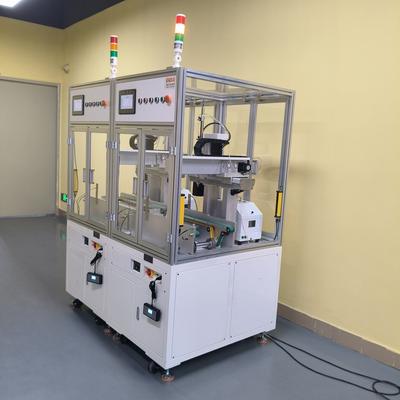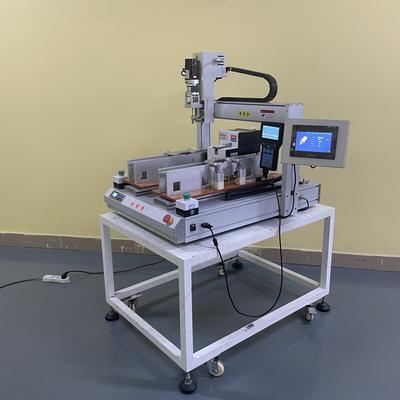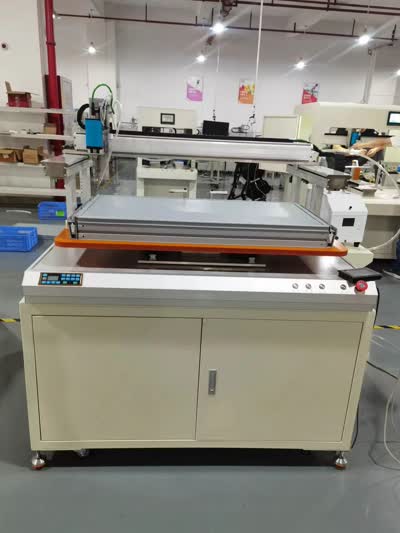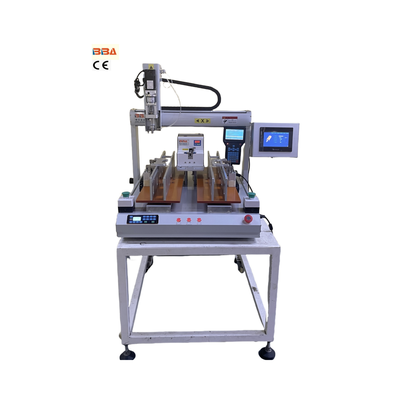Best Robotic Screw Machines for Small Assembly Lines | Automated Screwdriving

| Product Name | Applicable industries |
| Desktop Screwdriver Robot | Laptop and Tablet Assembly |
Best Robotic Screw Machines for Small Assembly Lines
In the rapidly evolving world of manufacturing, efficiency and precision are paramount. For small to medium-sized assembly lines, the integration of automated solutions can be a game-changer, dramatically improving throughput, consistency, and overall product quality. Among the most critical and often repetitive tasks in electronics, automotive sub-assembly, and consumer goods production is screwdriving. Manual screwdriving is not only time-consuming but also prone to human error, leading to inconsistencies, stripped threads, and worker fatigue. This is where robotic screw machines come into play, offering a sophisticated yet accessible automation solution tailored for smaller-scale operations.
Key Considerations for Small Assembly Lines
Selecting the right robotic screwdriving system requires careful evaluation of your specific production needs. For smaller lines, flexibility and a quick return on investment (ROI) are often primary concerns. Key factors to consider include:
- Footprint and Integration: The machine must fit comfortably within existing floor space without disrupting workflow. Look for compact, modular designs that can be easily integrated into your current setup.
- Ease of Programming: User-friendly software with intuitive interfaces, often featuring teach-pendant or even drag-and-drop programming, is essential for quick changeovers between different products.
- Versatility: The ability to handle multiple screw types, sizes, and angles is crucial for lines that produce various products. Quick-change tooling and adjustable torque settings are highly desirable features.
- Speed and Accuracy: While sheer speed is impressive, consistent accuracy—preventing cross-threading and ensuring perfect torque every time—is what truly reduces waste and rework.
- Scalability: Choosing a system that can grow with your business, perhaps by adding additional arms or workstations, protects your investment for the future.
Top Features to Look For
Modern robotic screw machines designed for smaller enterprises boast an impressive array of features that were once only available to large corporations. When evaluating options, prioritize systems that offer:
- Vision Systems: Integrated cameras can verify screw presence, identify hole locations, and perform post-driving quality checks, ensuring 100% accuracy.
- Automatic Feeders: Reliable bowl or cartridge feeders that continuously supply screws to the driver, minimizing downtime and operator intervention.
- Force Feedback Technology: Advanced sensors that monitor torque and Z-axis force in real-time. This allows the machine to detect misalignments instantly and compensate, preventing damage to screws and products.
- Collaborative Operation: Some models are designed to work safely alongside human operators without the need for extensive safety caging, enhancing teamwork and flexibility on the shop floor.
- Data Tracking: Connectivity features that log process data for each assembly, providing valuable insights for quality control and traceability, which is increasingly important in industry standards.
Implementing a robotic screwdriving system is a strategic move towards lean manufacturing. It not only optimizes a critical bottleneck but also reallocates your skilled workforce to more value-added tasks like quality control and machine oversight, fostering innovation and employee satisfaction.
Unlocking New Levels of Productivity
The adoption of automated screwdriving technology is a significant step forward for small assembly lines. It represents a commitment to quality, efficiency, and future growth. By eliminating the variability of manual labor, these systems ensure every product is built to exact specifications, enhancing brand reputation and customer trust. The reduction in physical strain also contributes to a safer and more ergonomic work environment. The initial investment is quickly offset by the substantial gains in output, the drastic reduction in errors and associated costs, and the ability to meet increasing demand with confidence.
In conclusion, the journey toward automation does not have to be daunting. Today's best robotic screw machines are designed with the smaller manufacturer in mind, offering scalable, user-friendly, and highly efficient solutions that deliver immediate and long-term benefits. By carefully assessing your needs and choosing a system with the right features, you can transform your assembly line into a model of modern precision manufacturing.


